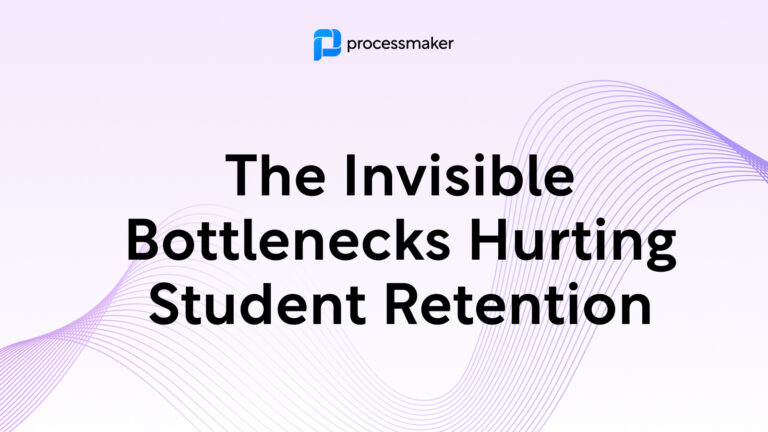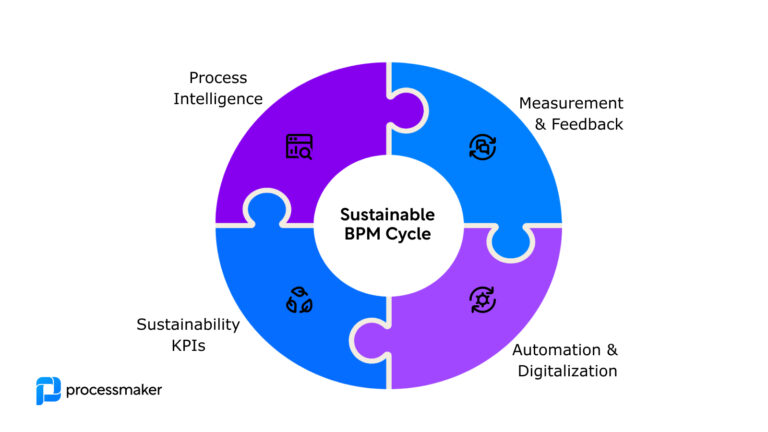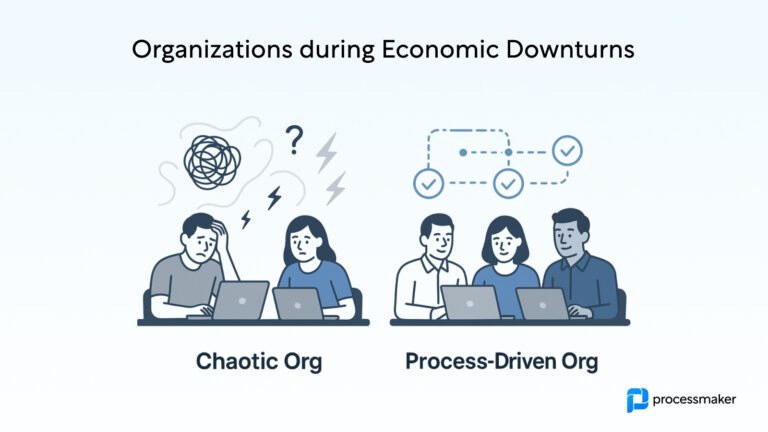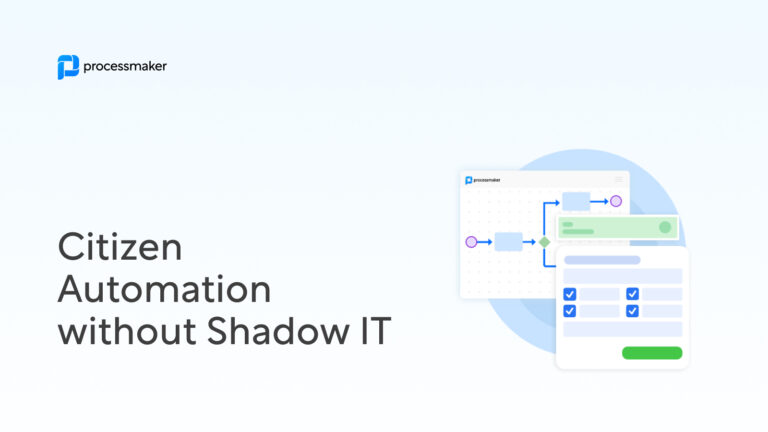Student retention has become one of the most pressing challenges in higher education. Institutions invest heavily in recruitment, orientation, and student success initiatives—yet often overlook the invisible bottlenecks that quietly undermine those efforts.
When a student’s financial aid appeal drags on for weeks, or when course substitution requests get lost in administrative back-and-forth, the result is frustration, disengagement, and ultimately, attrition.
In today’s competitive Higher Ed landscape, these slow or broken internal processes can make the difference between a student who persists and one who leaves.
How Internal Bottlenecks Drive Student Attrition
While academic challenges and financial pressures are well-known contributors to student attrition, process bottlenecks are often ignored. Here are three critical examples:
1. Financial Aid Appeals
Students who can’t get timely decisions on appeals often face uncertainty about whether they can afford to continue. Delays in communication or paperwork can push students to transfer or drop out altogether.
2. Course Substitutions and Approvals
When students need to substitute a course to stay on track for graduation, long approval cycles can delay registration. A single stalled form can mean missing a course offering and extending time-to-degree.
3. Administrative Complexity
Students today expect the same digital ease they get from banks, retailers, and apps. If institutions still rely on manual paperwork, email chains, or outdated portals, they risk creating friction that erodes trust and satisfaction.
Bottom line: Process inefficiencies don’t just frustrate staff—they create moments of friction that students experience directly, damaging retention rates.
How to Fix the Hidden Bottlenecks
Forward-thinking institutions are taking a process-first approach to student experience. By streamlining workflows and removing friction, they create a smoother path for students to succeed.
- Automate Repetitive Tasks
Manual form routing and document collection are prime candidates for automation. With the right tools, approvals and notifications can be instant, ensuring students aren’t left waiting.
- Standardize Across Departments
Disparate systems and siloed processes lead to errors and delays. Standardizing workflows across financial aid, registrar, and academic advising helps ensure consistent service delivery.
- Put Students at the Center
A student-friendly digital experience—mobile forms, self-service portals, clear status updates—reduces anxiety and builds confidence that the institution is responsive.
Why ProcessMaker for Higher Education?
ProcessMaker Higher Ed Solutions are designed specifically to eliminate these invisible bottlenecks. Universities and colleges use ProcessMaker to:
- Streamline financial aid workflows, cutting appeal turnaround from weeks to days.
- Automate course substitution requests and academic approvals with real-time tracking.
- Deliver mobile-friendly, student-first forms and dashboards.
- Integrate with existing student information systems (SIS) for seamless operations.
By aligning processes with the needs of today’s students, ProcessMaker helps institutions improve retention, reduce administrative burden, and deliver a superior student experience.
Conclusion
Student success isn’t just about academics—it’s also about the experience of navigating university systems. Invisible process bottlenecks can quietly erode retention, but with modern workflow automation, institutions can turn those friction points into differentiators.
If your institution is serious about improving retention, it’s time to examine the hidden processes that shape the student journey.
FAQs: Student Retention and Process Improvement
How do internal processes impact student retention?
Delays in financial aid, course substitutions, and other approvals create stress and uncertainty for students. These bottlenecks can drive disengagement and increase dropout risk.
What types of processes affect students the most?
Financial aid, registrar workflows, course approvals, advising requests, and housing or enrollment changes are some of the most impactful processes on the student journey.
How can automation help higher education institutions?
Automation reduces manual effort, accelerates approvals, eliminates errors, and provides real-time updates—improving both staff efficiency and student satisfaction.
Why choose ProcessMaker for higher education workflows?
ProcessMaker is built to integrate with SIS and ERP systems, digitize forms, and provide student-friendly self-service experiences while reducing administrative workload.
What is the connection between student experience and retention?
A smooth, transparent, and responsive student experience increases trust and engagement—key drivers of student persistence and graduation rates.





